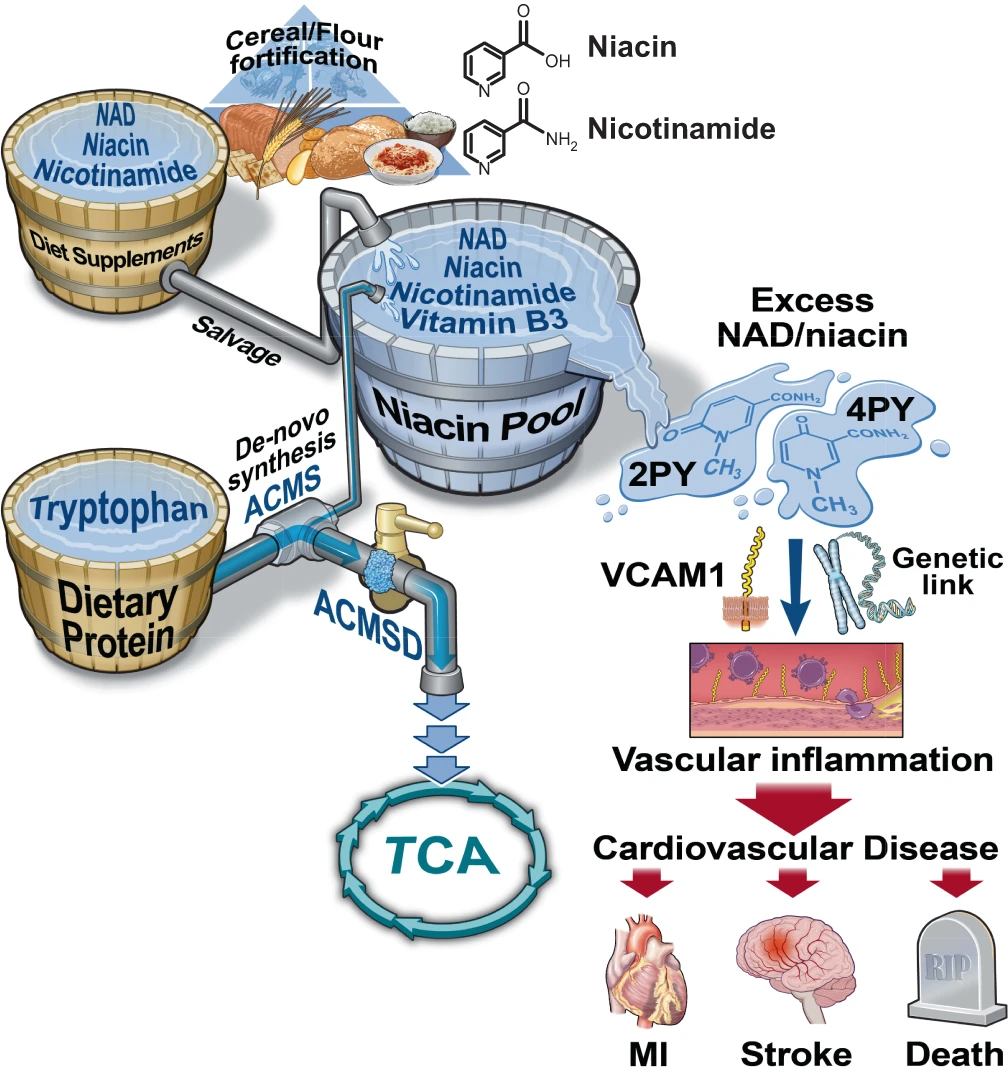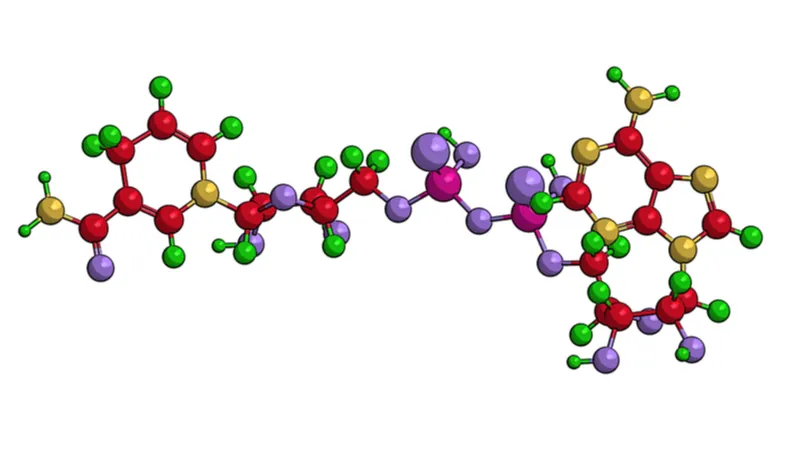Posted 29 February 2024 - 04:11 PM
A new study shows that niacin, a popular food fortifier, supplement, and NAD precursor, might increase the risk of major adverse cardiovascular events by as much as twofold [1].
The dark side of niacin?
Vitamins are good for you, but caveats apply. Too much of some vitamins, such as vitamin A, are toxic [2]. Vitamin B3, also known as niacin, on the other hand, has always been considered relatively safe. Now, a new Cleveland clinic-led study published in Nature Medicine suggests that overdoing niacin may be a serious risk factor for cardiovascular disease (CVD).
People get large amounts of niacin by taking supplements or via processed foods fortified with niacin, such as cereals. In the US, niacin fortification is mandated by law, as a niacin deficiency causes pellagra, a dangerous disease that was rampant during the Great Depression. Today, however, this niacin deficit is a thing of the past.
Niacin has also been tried against CVD since it is known to improve lipid profile. Despite that, it was discovered that niacin supplementation doesn’t lower CVD risk in what became known as “the niacin paradox”. Niacin is also a precursor of NAD, a molecule crucial for energy production and DNA repair in cells. Levels of NAD decline with age, making it a popular target for geroscientists and biohackers.
Twofold increase in cardiovascular risk
Despite CVD being the world’s leading cause of death, all of its risk factors have not yet been explored. The study’s authors analyzed metabolites in the blood plasma of more than a thousand stable cardiac patients to see if they could find any new ones. They discovered a footprint of a previously unknown metabolite, with an elemental composition of C7H9O2N2, that was profoundly associated with major adverse cardiovascular events (MACE) independently of all known risk factors.
The researchers were then able to determine that it was actually not a single molecule but a mix of two known isomers (differently structured molecules with an identical molecular formula): 2PY and 4PY. Previous research has found that these two metabolites are products of the niacin/NAD pathway, but other than that, little was known about their role in the body.
These results were then validated in two independent cohorts of more than 3,000 patients in total, showing that people with the highest circulating 2PY and 4PY levels had much higher risks of MACE, even after adjusting for known risk factors. The hazard ratio was more pronounced in the European compared to the US cohort, reaching an almost twofold increase in the former: that is, people with the highest levels of the two metabolites were at twice the risk of experiencing MACE than those with the lowest levels (4th quartile vs 1st quartile).
Inflammation as a possible link
2PY and 4PY levels were also positively correlated with the levels of C-reactive protein (CRP), which is the most common marker of inflammation (a risk factor for CVD), and with VCAM-1, a protein known to play a role in vascular inflammation and atherogenesis by increasing the adhesion of leukocytes to arterial walls [3]. Injections of 4PY indeed increased the number of adherent leukocytes in mice.
“What’s exciting is that this pathway appears to be a previously unrecognized yet significant contributor to the development of cardiovascular disease,” said Dr. Stanley Hazen of Cleveland Clinic’s Lerner Research Institute, the study’s leading author. “What’s more, we can measure it, meaning there is potential for diagnostic testing. These insights set the stage for developing new approaches to counteract the effects of this pathway.”
Apart from offering a possible solution to “the niacin paradox”, the results of this study might also be relevant in the context of NAD supplementation [4], a popular anti-aging intervention. Hopefully, this will be elucidated by future research.

In summary, the present studies, combined with recent randomized clinical trials with niacin in the modern era of high-potency statins, suggest a possible explanation for the ‘niacin paradox’—the observation that the LDL lowering induced by niacin fails to achieve the expected reduction in CVD risks. The present studies also raise the question of whether a continued mandate of flour and cereal fortification with niacin is warranted. Although such a mandate no doubt saved lives when first implemented more than 80 years ago, its long-term safety, particularly in more vulnerable populations, merits discussion (for example, should easing of the mandate to allow ‘organic’ or ‘non-fortified’ flour and cereal options be available, particularly given that the highest quartile of 4PY levels is associated with an approximately two-fold increased incident MACE risk compared to those harboring lowest quartile levels).
To do this, we need your support. Your charitable contribution tranforms into rejuvenation research, news, shows, and more. Will you help?
Literature
[1] Ferrell, M., Wang, Z., Anderson, J. T., Li, X. S., Witkowski, M., DiDonato, J. A., … & Hazen, S. L. (2024). A terminal metabolite of niacin promotes vascular inflammation and contributes to cardiovascular disease risk. Nature Medicine, 1-11.
[2] Olson, J. M., Ameer, M. A., & Goyal, A. (2022). Vitamin A toxicity. In StatPearls [Internet]. StatPearls Publishing.
[3] Galkina, E., & Ley, K. (2007). Vascular adhesion molecules in atherosclerosis. Arteriosclerosis, thrombosis, and vascular biology, 27(11), 2292-2301.
[4] Pirinen, E., Auranen, M., Khan, N. A., Brilhante, V., Urho, N., Pessia, A., … & Suomalainen, A. (2020). Niacin cures systemic NAD+ deficiency and improves muscle performance in adult-onset mitochondrial myopathy. Cell metabolism, 31(6), 1078-1090.
View the article at lifespan.io











































